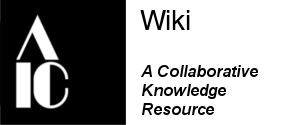Koch, Mogens S.
From MediaWiki
- Full name (last name, first name): Mogens S. Koch
- Date and place of birth: 1943, Copenhagen, Denmark
- Date and place of death: April 16, 2025. Copenhagen, Denmark
- Nationalities: Danish
- Education (degrees):
- Apprenticeship in photography, 1963 Completed photography education at the Royal Danish Academy of Fine Arts (KADK), 1976
- Notable teachers/mentors: Edith Weyde (Agfa Seminar, 1964); Martin Hansch (IADA seminars)
- Employment highlights:
- 1965–1982 – Lecturer at the School of Architecture, Royal Danish Academy of Fine Arts, specializing in architectural and design photography
- 1967–1992 – Photographer specializing in architecture and furniture photography (private studio)
- 1973–2013 – Lecturer at the School of Conservation, Royal Danish Academy of Fine Arts, teaching photographic processes and conservation techniques, where he developed and taught the first full-semester photograph conservation course beginning in 1978
- 2002 – Led disaster recovery efforts following the Dresden Floods, developing effective rinsing techniques for water-damaged photographic negatives
- 2013–2025 – Emeritus faculty member at the Royal Danish Academy of Fine Arts, School of Conservation, following his retirement
- 2017–2025 – Administrative Manager of Mogens Koch Design I/S, overseeing the continuation of his father's furniture and textile designs
- Special achievements, honors or awards:
- Invented the four-flap envelope for negative preservation (adopted across archives internationally)
- Founding president of the European Confederation of Conservator-Restorers’ Organizations (E.C.C.O.), 1991–1993
- President of IADA (1987–2001), board member from 1984
- Developed the jig for teh Photographic Activity Test at IPI in the late 1980s
- Honorary member of IADA, 2003
- Recipient of the DGPh Kulturpreis (Deutsche Gesellschaft für Photographie), 2003, alongside Wim Wenders
- Honored in 2013 by AIC Photographic Materials Group (PMG) and ICOM-CC Photographic Materials Working Group
- Curriculum vitae:
- Mogens S. Koch was born in Copenhagen, Denmark. His father, Mogens Koch Sr., was a renowned Danish architect and furniture designer whose functionalist work and modular designs remain influential and are still in production today.
- After completing the 9th grade, he trained as a carpenter and began an apprenticeship in photography in 1963, specializing in PR photography of architecture, furniture, and design objects. He completed his formal photography education at the Royal Danish Academy of Fine Arts in 1976. In 1964, he attended a formative Agfa seminar in Germany, where he met Edith Weyde. He later studied with Martin Hansch in Munich, who would go on to teach at IADA seminars. Koch undertook ten photographic expeditions to Greenland, documenting architecture and the changing landscape. In 1976, Koch was invited to develop photographic documentation training at the newly established Conservation School at the Royal Danish Academy of Fine Arts (KADK). Together with chemist and paper conservator Birte Rottenstein, he offered a two-week seminar in photograph conservation in 1978, which evolved into a semester-long course by 1980. The course, which admitted students from across the Nordic region, covered photographic process identification, treatment techniques, storage materials, and environmental concerns, with a particular focus on the preservation of negatives due to Denmark’s extensive photographic archives. Koch made major technical contributions to the field, including the invention of the four-flap envelope, initially manufactured in Sweden and Germany using neutral pH paper, in collaboration with Hahnemuhle paper. He conducted in-depth research into chemical image retrieval treatments for deteriorated negatives, focusing on historical intensification procedures. Though irreversible, these treatments were justified in the context of salvaging documentary content from damaged negatives. He studied the effects of swelling in emulsions caused by bleach and redevelopment procedures. In 1980, he traveled to Rochester, New York, where he began lifelong professional relationships with Roger Eaton, Walter Clark, and Jim Reilly. He helped develop the methodology for teh Photographic Activity test, designing the jogs used.
- Koch maintained a private photography studio specializing in architecture and furniture photography until 1992. Following the 2002 Dresden floods, he played a leading role in the recovery of large-format negatives, working with Sebastian Dubdrosskin and Gerard Bening to implement ethanol-based rinsing techniques for water-damaged materials. Koch taught more than thirty week-long workshops and training sessions around the world, including in Vienna, the Netherlands, Paris, Rome (at ICCROM), and China. He was a founding board member of the Internationale Arbeitsgemeinschaft der Archiv-, Bibliotheks- und Graphikrestauratoren (IADA), serving from 1984 and as its president from 1987 to 2001. He became an honorary member in 2003. He was also the first president of the European Confederation of Conservator-Restorers’ Organizations (E.C.C.O.) from 1991 to 1993 and represented IADA to E.C.C.O. until 1999. Koch’s work was widely recognized. In 2003, he received the Kulturpreis of the Deutsche Gesellschaft für Photographie (DGPh), together with filmmaker Wim Wenders. This prestigious award recognizes significant contributions to the field of photography.
- In 2013, he was jointly honored by the American Institute for Conservation – Photographic Materials Group (AIC-PMG) and the International Council of Museums – Committee for Conservation – Photographic Materials Working Group (ICOM-CC PMWG). He retired from the Conservation School in 2014 and held an emeritus position thereafter. Mogens S. Koch passed away on April 14, 2025. He was a pioneer in the field of photograph conservation, a generous teacher, and an influential colleague whose legacy endures through the students he trained, the materials he helped save, and the field he helped define.
- Publications:
- Conference presentations: -
- FAIC Oral History entry: -
- Location of papers or archives: -
- Contact Information: Deceased.
- Links: -

